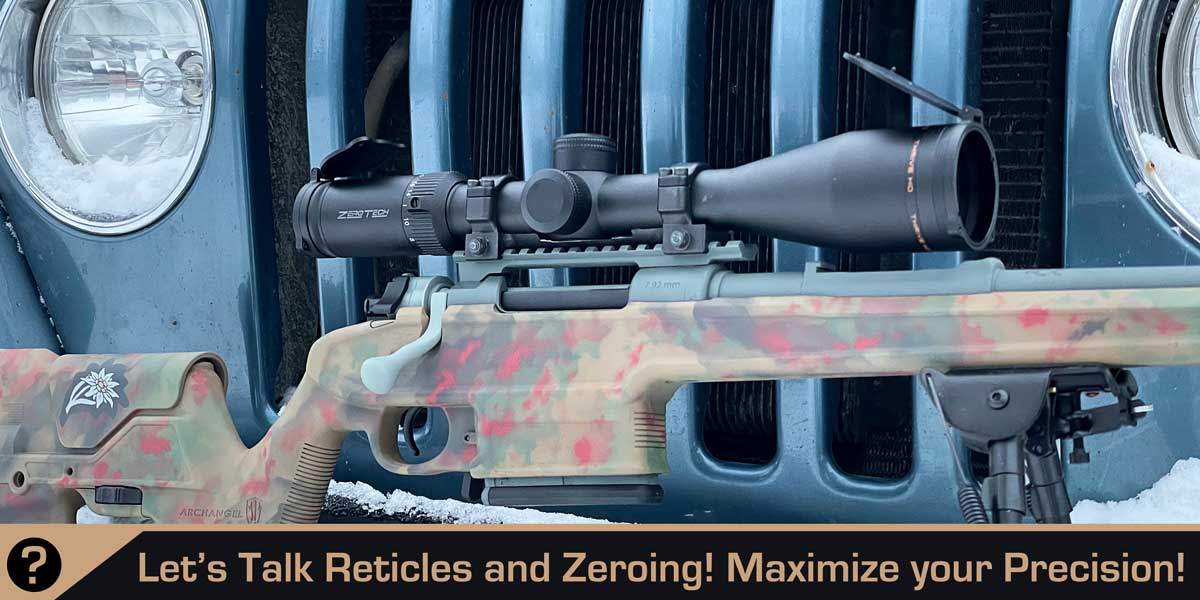
Since scope technology has advanced from wire reticles to etched glass, BDC (ballistic drop compensator) reticles have become increasingly prevalent.
Unfortunately, most are not really well designed, and most shooters don’t really know how to use them to their full advantage. A good BDC reticle can be very valuable if the shooter understands how to use it with the rifle and ammunition as an integrated system. We will go through the choice and setup of a BDC reticle scope from start to finish.
The Rifle
The abused barreled action caught my eye like a homeless panhandler with a wistful look of hungry dejection from the gun show table. Rough, rusted, pitted, ground and filed on, drilled and tapped, screws broken off in their holes, poorly painted and peeling; it had a part I needed, so I asked.
“The bore is so badly pitted, it’s not worth salvaging,” the seller told me when he gave the price, and I carried it off for the part or two I wanted. Once home, I glanced through the bore. It was mirror-perfect. My plans changed abruptly from cannibalize and dump, to inexpensive grab-and-go hunting rifle for kids and guests.
After a lot of work, the old Czech-made K98k, in a more modern configuration, but refinished with a nod to both its Czech and German heritage, needed only ammo and a scope.
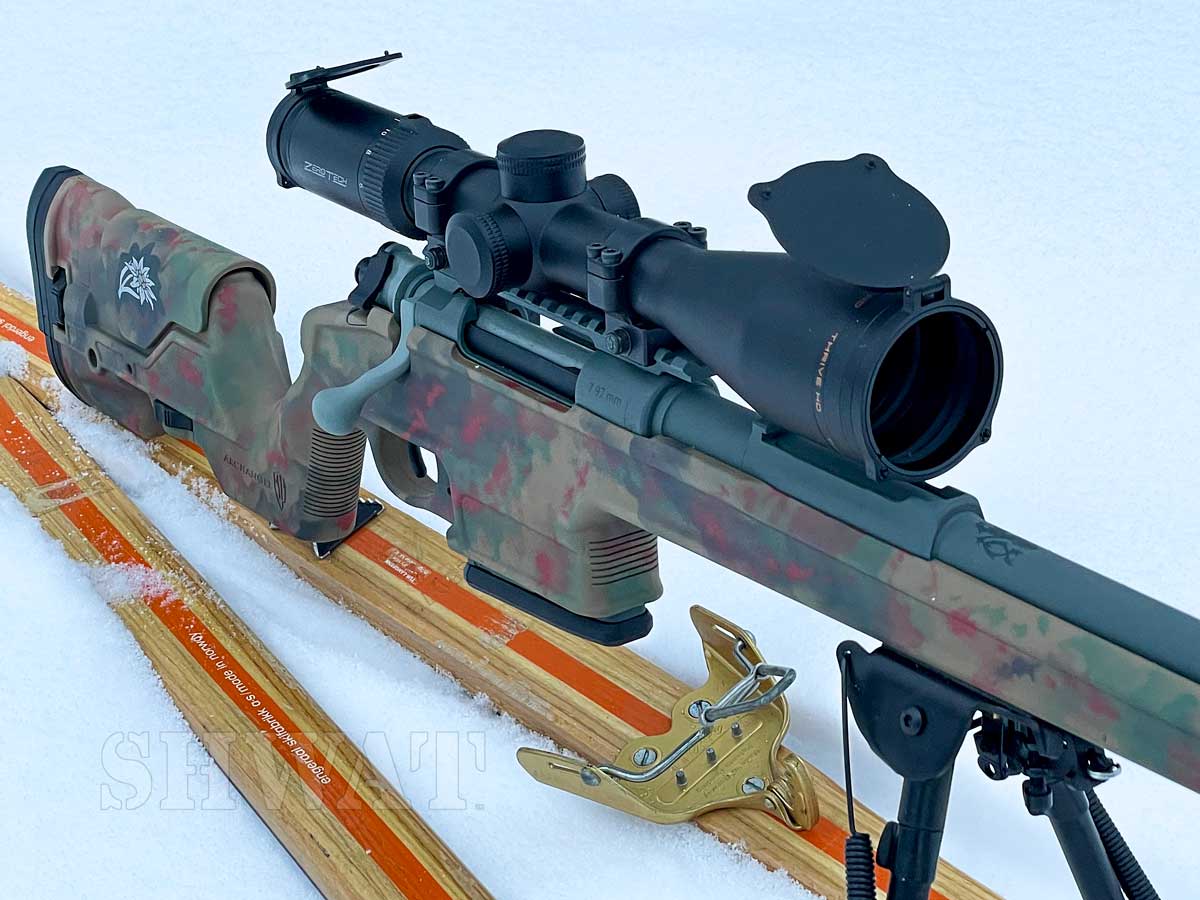
The Ammo
The K98k was still in its original chambering, 8×57 IS (JS). This great old cartridge is one of the most popular hunting cartridges worldwide, but suffers in reputation here due to the anemic cartridges produced by most American ammo manufacturers. Lounging around gunshop bargain barrels and sedentary racks in collectors’ lounges, geriatric bolt guns from the 1880s reminisce about the glory days of the 8×57, I shudder at the thought of the destruction that would be wrought on their actions by a modern 8×57 IS cartridge. US ammo companies also shudder at the thought of litigation should their cartridges turn one of these old rifles into a grenade, and load their 8×57 ammo to levels, while not safe for the older rifles, at least calculated to reduce the severity of injuries.
In Europe, shooters are expected to know what their gun is capable of shooting. 8×57 IS is loaded for the guns that were intended to shoot it. So the choice is clear. If I want performance from a European cartridge, I buy European ammo.
Norma is my first choice for European cartridges (and a lot of US ones) for hunting, and the first manufacturer I checked when looking for ammo. They did not disappoint.
Norma’s new ECOSTRIKE bullet takes this old cartridge to a new level. With a 160 grain polymer-tipped high ballistic coefficient lead-free bullet, the effective range of the rifle and the terminal effectiveness of the bullet are stretched further than ever before.
Like the .30-06, the 8×57 IS is very versatile and performs great with heavier bullets like Norma’s 196-grain Oryx or Alaskan bullets. But for versatility, the ECOSTRIKE was what I was looking for.
The Scope
I wanted a scope with a simple but intelligent BDC reticle that the average shooter could use with minimal instruction. I didn’t want to train snipers, just give someone confidence to hit the vital zone of a moose at 500 yards with a good rest.
The “simple but intelligent” requirement immediately disqualified most BDC scopes on the market. I didn’t want a reticle designed to sell scopes, I wanted one designed to shoot.
I found an answer with ZeroTech. Their PHR II was just the sort of reticle I was looking for.
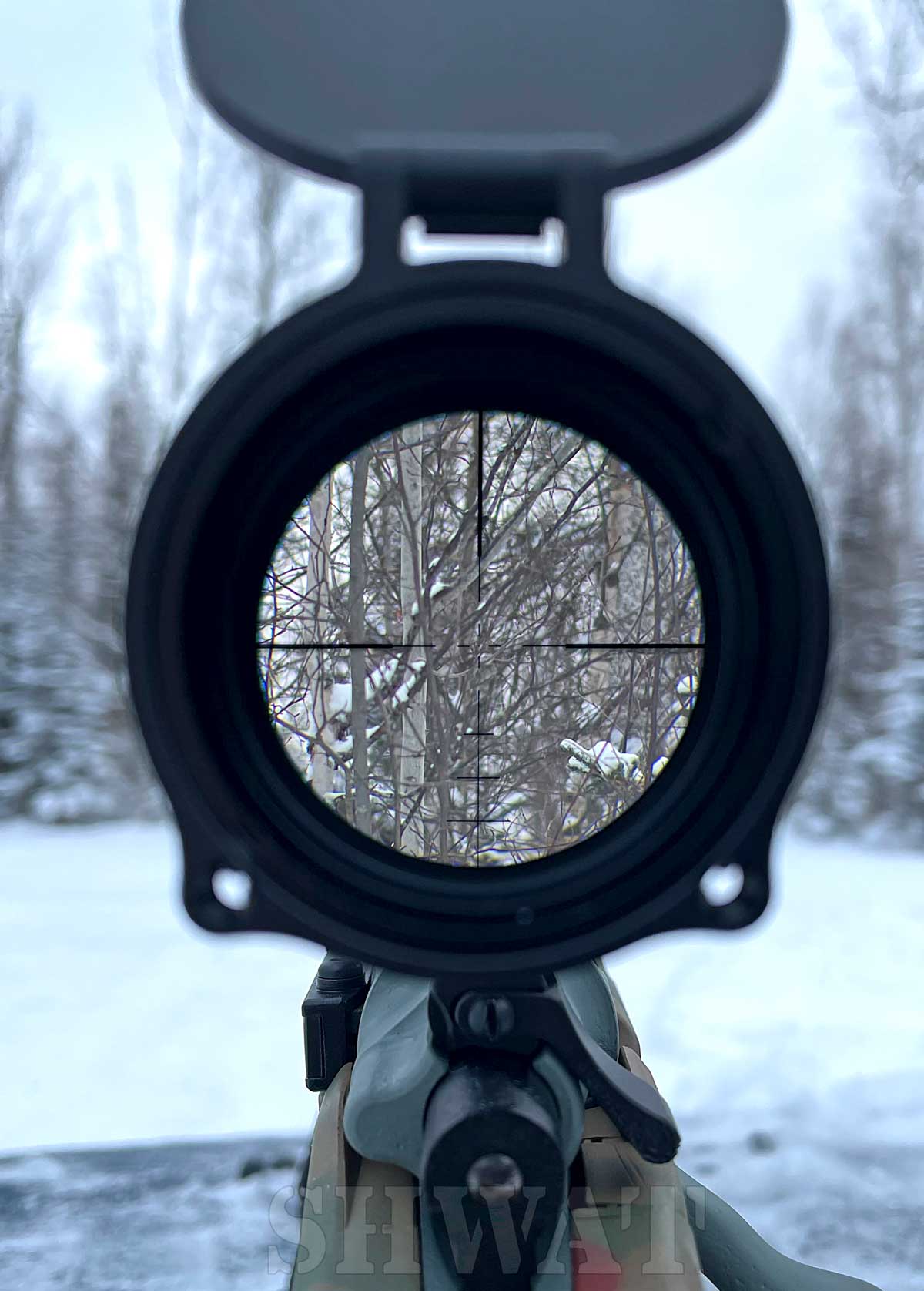
Haven’t heard of ZeroTech? Then you haven’t been shooting in Australia lately. Australia is home to some real shooters, and hunters as well. Turns out some years back some of those shooters were frustrated by scopes designed for marketing executives, not for real shooters, and they set out to change that. I think they did a pretty good job.
Now they have responded to demand from American shooters and hunters and their scopes are finally available in the US.
The scope is a well-built, attractive, 6-24×50 side-focus scope with a 30mm tube. Clean and streamlined, it comes with aluminum flip-up covers over bright, crystal-clear glass and a lifetime warranty that covers the scope even if I resold it.
But our focus here is the PHR II reticle. The first thing I noticed in researching the reticle is that ZeroTech has excellent documentation on their website, including downloadable cheat sheets and ballistic tables. These graphics also come in print form with the scopes themselves. This is very important, as I have spent hours trying to figure out the subtensions on BDC reticles from other manufacturers.
When I looked at the reticle, I saw several features I liked:
– The reticle is clean and simple.
– It has an open crosshair with a center dot. This is a feature that I really like, and great in low light when crosshairs tend to choke up where they cross.
– The stadia lines increase in length with range, useful for windage. (So many BDC reticles have stadia lines that narrow as range increases like an upside-down tree. They aren’t right for ranging game, so whose dumb idea was that?!)
– Lines aren’t too heavy.
– It wasn’t designed for a particular cartridge.
– Second focal plane means the reticle can be adjusted with magnification.
The Science
I didn’t worry too much about whether the reticle was specifically designed for the trajectory of my cartridge. How you use a BDC reticle can be adjusted to the cartridge; you don’t have to adjust your cartridge to the reticle.
So we will start with the cartridge. How will I use this in conjunction with the scope? I could do what most people do with a BDC reticle and zero at a close range, then use the reticle to adjust for further ranges, but why not be a bit more practical? If I zero at say 50 or 100 yards, I am going to HAVE to use holdovers well within the easy hunting range of this cartridge. A 100 yd zero requires me to start holding over at just over 200 yards. On an easy 225 yard shot, do I really want to force myself to mess around with holdovers?
So the first thing I did was work out the ballistics of the Norma ECOSTRIKE.
I started with a ballistic calculator, and then confirmed at the range. On a computer I usually use Applied Ballistic, LLC’s online ballistic calculator. On my phone, I have SIG’s BDX app, which is a collaboration between SIG and Applied Ballistics.
What I want to determine is the maximum point-blank range (MPBR) of the cartridge. This is the max range at which a dead-on center mass hold will strike the kill zone of an animal without any adjustment. This is dependent on the size of the game. Since I wanted to have it set up for both moose and black bear, I chose a 10” kill zone, which is on the small side, but bears can be hard to track if they aren’t hit well, so better to keep things tight.
Maximizing Precision at Any Range
A 10” target gives an MPBR of 332 yds. That means that within that range, the bullet will never be more than 5” high or 5” low, always in the vital zone.
To get this range, I need to zero at 283 yards, which means I just find the line marked 283 yds at the local range, right? Well, the bullet rises through the line of sight and travels above it before dropping back through the LOS at 283 yds. So I just need to find the range at which it rises through, which is 20 yards. A 20 yd zero is a 283 yd zero with the 160 gr Norma ECOSTRIKE .323 bullet at 2800 FPS.
Zero at 20 yds, confirm and tune the zero at 283 yds, easy.
But we have this really cool reticle, so where in the reticle do we zero?
Well, if we want to get the most out of the reticle, we could zero at the top of the center crosshair, then use the center dot, bottom of center crosshair, top of bottom posts, etc. as holdover aim points. This will give max utilization of the reticle.
I don’t want to do this for a couple of reasons. First, if other people are using this scope, their instinct is to use the center of the crosshairs for a dead-on aim. They might not remember to use the top of the center crosshairs.
Second, since it is a second focal plane scope, I would be forced to use only one magnification setting, or I would change my zero. The center dot is centered in the scope and is the only part of the reticle that remains constant in relation to the target when magnification is changed. In fact, you can actually use your magnification to adjust your holdovers for range with a second focal plane scope.
So we will zero to the center dot. Here is what our subtensions look like:
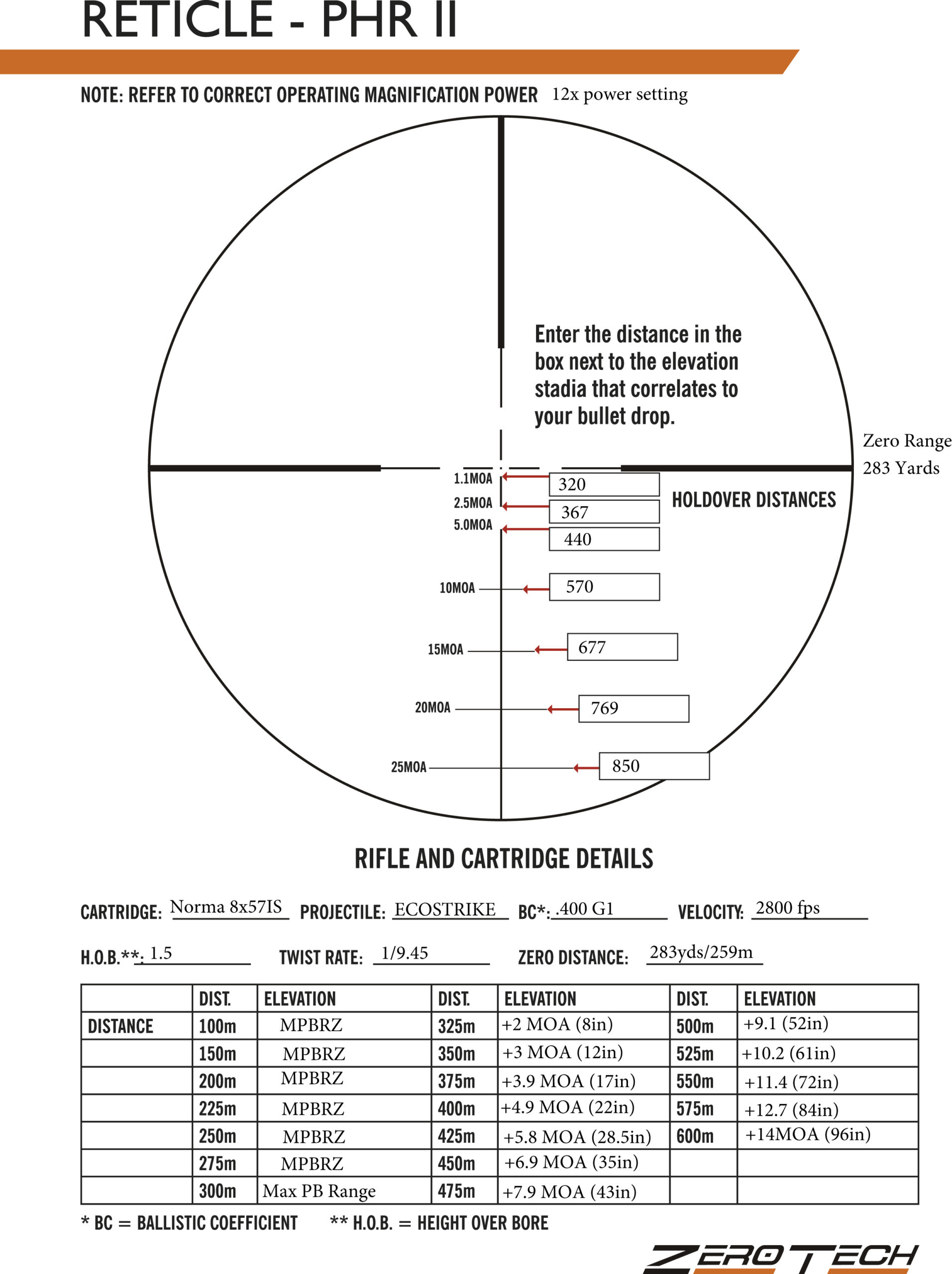
Now the human brain is skilled at estimating the exact center between two points, so the halfway points between subtensions can be used as aim points as well, if you practice.
This adds these ranges:
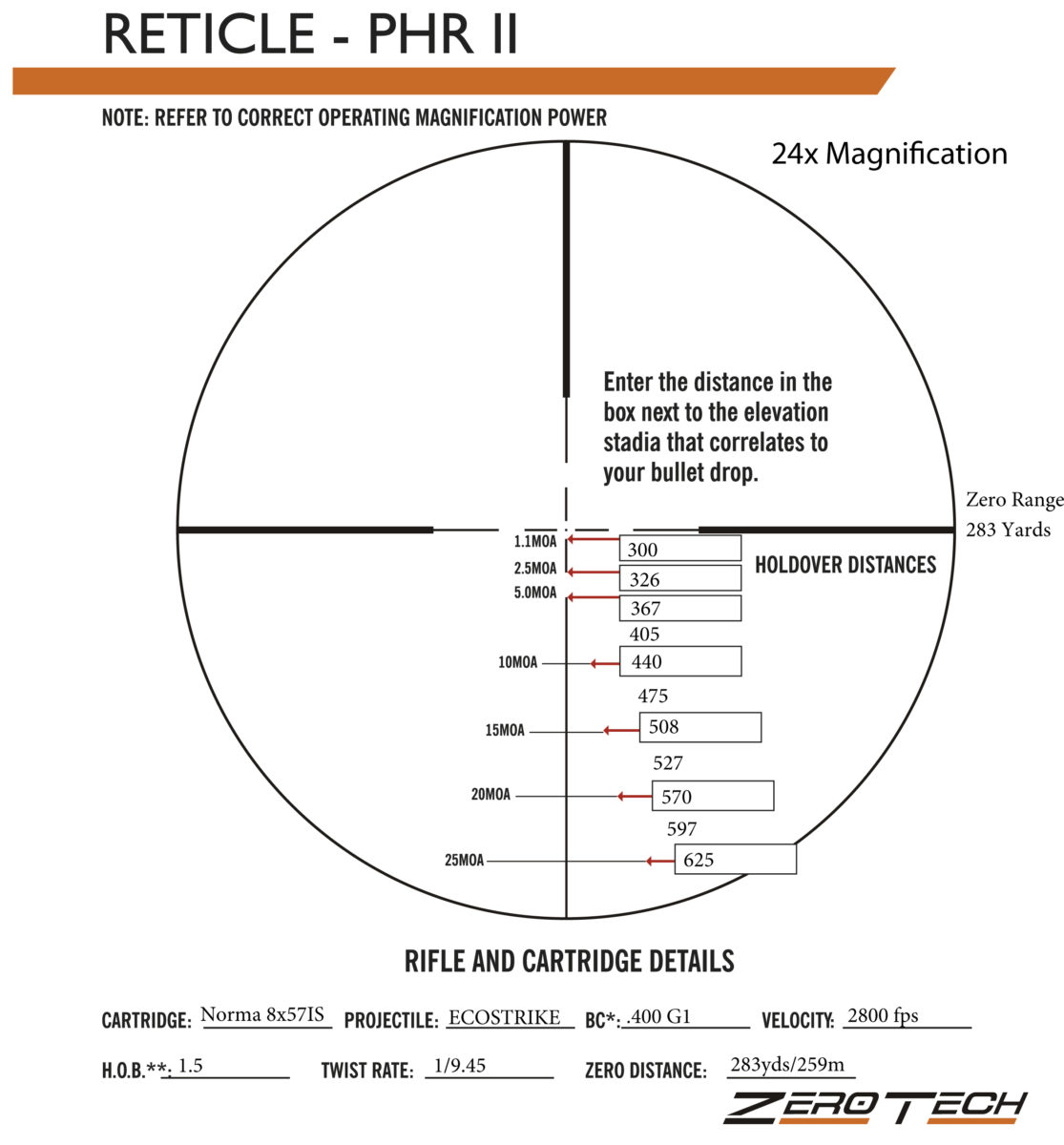
ZeroTech provides the MOA sizes of all dimensions of the reticle including the width of the subtension lines, so we can see how they work:
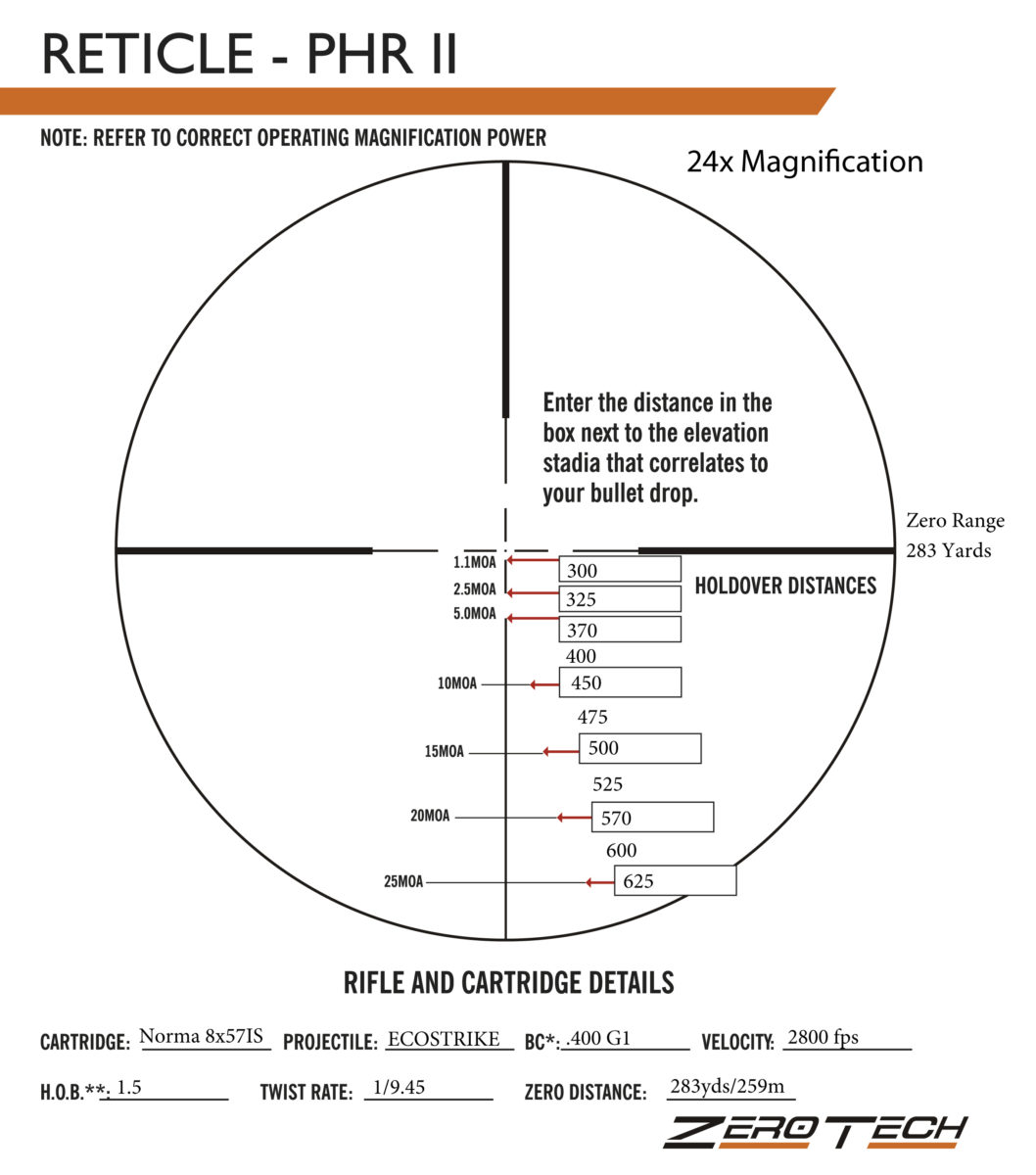
We can calculate ranges for our range card (cheat sheet) but we really need a chart for windage. So a simple MOA windage chart lets us use the widths of the lines to estimate windage holds.
Now the subtensions on the scope are designed for these numbers at 12x. What happens if we change the magnification?
At 6 power, all the numbers are double. The holdovers become less useful.
But at 24 power, the numbers are half, and would look like this:
24 power becomes more valuable for longer shots because the reticle measures smaller subtensions, and our holdover precision increases. Now we are really using the reticle to its full potential.
Zeroed for a max point-blank range of 332 yds, we can carry the scope at 6 power, or 10, or whatever fits our conditions, and hold dead on out to 332 yds. If we have to land a longer shot, we can dial it up to 24 for accurate holdovers. I envision using this rifle out to 600 yds max, but more comfortably 400 or 500 yards on game with the right conditions.
So reticle charts for 12 power and 24 power printed on Rite-In-The-Rain paper, with a windage chart and a range-finder complete the rifle/cartridge/reticle combination. And just like that, we have a system tuned to put non-lead on target at any reasonable range.

